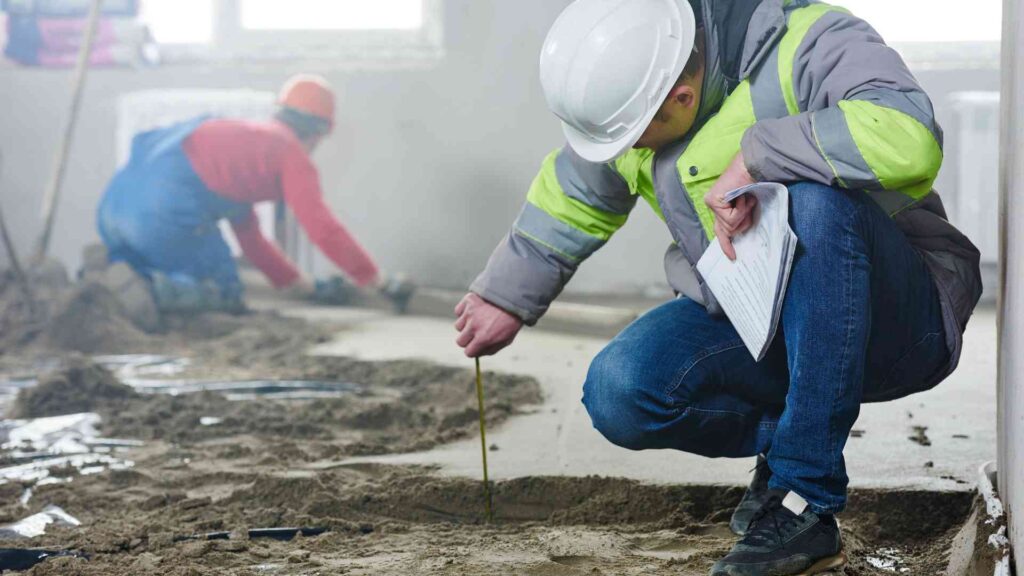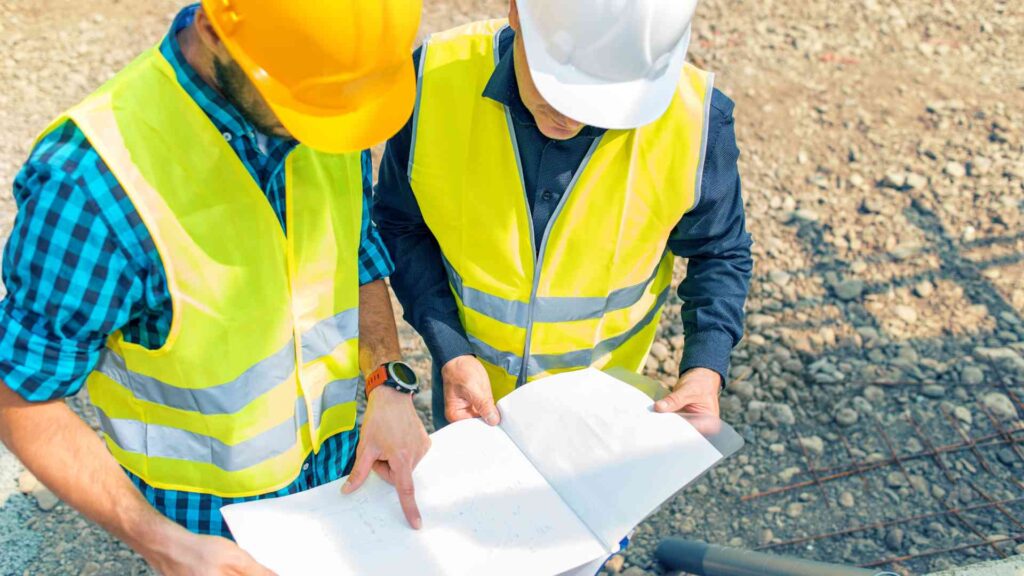If you’re planning to build or renovate your home in Arizona, one crucial aspect to consider is the type of concrete you’ll use. Concrete is a versatile material that plays a vital role in the construction industry. Understanding the basics of concrete and choosing the right type for your home can make a significant difference in the durability and aesthetic appeal of your project.
Understanding the Basics of Concrete
Concrete is a composite material made up of three main components: cement, aggregates, and water. Cement acts as the binder that holds the aggregates together, creating a solid structure. Aggregates, such as sand and gravel, provide strength and volume to the concrete mixture. Water is added to the mix to activate the chemical reaction that binds the cement and aggregates, forming a hardened material over time.
When it comes to understanding the basics of concrete, it is important to delve deeper into the properties and characteristics of each component. Cement, for instance, is typically made from limestone, clay, shells, and silica. These materials are finely ground and then heated to high temperatures in a kiln, resulting in a powder known as cement. The type and composition of cement can greatly affect the strength and durability of the concrete.
Aggregates, on the other hand, come in various sizes and shapes. They can be natural, such as river sand and crushed stone, or manufactured, like recycled concrete. The choice of aggregates depends on factors such as the desired strength, workability, and appearance of the concrete. The proportions of cement and aggregates in the mix are carefully determined to achieve the desired characteristics.
Water, although seemingly simple, plays a crucial role in the concrete-making process. It not only activates the chemical reaction that binds the cement and aggregates but also provides the necessary fluidity for the mixture to be easily poured and shaped. The amount of water used in the mix must be carefully controlled to ensure the right consistency and strength of the final product.
Defining Concrete and Its Uses
Concrete is an incredibly versatile material with numerous applications in construction. It is commonly used in foundations, walls, floors, driveways, and sidewalks. Its durability and strength make it an ideal choice for supporting heavy loads and withstanding the harsh Arizona climate.
Foundations, for example, require a strong and stable base to support the weight of a structure. Concrete provides the necessary strength and stability to ensure the longevity of the building. Walls made of concrete offer excellent sound insulation and fire resistance, making them a popular choice for both residential and commercial buildings.
When it comes to floors, concrete offers a durable and low-maintenance solution. It can be polished, stained, or stamped to create a wide range of decorative finishes. In driveways and sidewalks, concrete’s ability to withstand heavy traffic and extreme weather conditions makes it a reliable choice.
Concrete is also used in the construction of bridges, dams, and other infrastructure projects. Its versatility and ability to be molded into various shapes and sizes make it an essential material in the world of construction.
The Importance of Choosing the Right Concrete
Choosing the right type of concrete for your home is crucial because different concrete mixes have varying properties and strengths. Factors such as climate, purpose, durability, maintenance requirements, and aesthetics all play a role in determining the most suitable type for your project.
In regions with extreme temperatures, such as Arizona, it is important to select a concrete mix that can withstand the heat and prevent cracking. High-performance concrete, for example, is designed to have superior strength and durability, making it an excellent choice for areas with harsh climates.
The purpose of the concrete also influences the choice of mix. For structural elements, such as load-bearing walls or columns, a high-strength concrete mix is typically used. On the other hand, decorative concrete requires a mix that allows for intricate designs and finishes.
Considering the maintenance requirements is also essential. Some concrete mixes may require regular sealing or coating to protect against moisture, stains, or other forms of damage. Understanding the specific maintenance needs of the chosen concrete mix can help ensure its longevity and appearance over time.
Aesthetics should not be overlooked when selecting concrete. With various coloring and finishing options available, concrete can be customized to match the desired look and feel of a space. From exposed aggregate to stamped patterns, the possibilities are endless when it comes to creating visually appealing concrete surfaces.
Factors to Consider When Choosing Concrete for Your Home
When selecting concrete for your Arizona home, several factors come into play:
Climate and Weather Conditions in Arizona
Arizona experiences extreme weather conditions, including high temperatures, intense sunlight, and occasional heavy rain. It’s essential to choose concrete that can withstand these elements without cracking or deteriorating over time.
Due to the scorching heat in Arizona, the concrete used for residential purposes should have a low coefficient of thermal expansion. This means that it should be able to withstand the expansion and contraction caused by the extreme temperature fluctuations without developing cracks. Additionally, the concrete should have excellent UV resistance to prevent color fading or surface degradation due to prolonged exposure to intense sunlight.
Moreover, the occasional heavy rain in Arizona can pose a challenge to the durability of concrete. It is crucial to select a concrete mix that has a high water-cement ratio, ensuring proper hydration and minimizing the risk of cracking or water damage.
The Purpose of the Concrete in Your Home
The purpose of the concrete in your home also influences the type you should choose. For example, if you’re constructing a foundation, you’ll need a concrete mix with high strength and durability to support the weight of the structure effectively.
When it comes to constructing driveways or walkways, you should consider using concrete with a higher abrasion resistance. This will ensure that the surface can withstand the constant friction caused by vehicle tires or foot traffic, preventing premature wear and tear.
For decorative purposes, such as stamped concrete patios or countertops, you’ll want to choose a concrete mix that offers a wide range of color options and finishes. This will allow you to achieve the desired aesthetic appeal while maintaining the durability and longevity of the concrete.
Durability and Maintenance Requirements
Consider the long-term durability and maintenance requirements of the concrete you choose. Some types require less maintenance and are more resistant to wear and tear, while others may need regular sealing or other protective measures.
If you’re looking for a low-maintenance option, you might consider using fiber-reinforced concrete. The addition of fibers, such as steel or synthetic materials, enhances the concrete’s tensile strength and reduces the likelihood of cracking. This can significantly reduce the need for repairs or maintenance in the future.
On the other hand, if you opt for decorative concrete, it’s important to understand the maintenance requirements associated with it. Depending on the chosen finish, you may need to apply a sealer periodically to protect the surface from stains, fading, or moisture penetration. Regular cleaning and resealing can help preserve the appearance and extend the lifespan of decorative concrete.
Furthermore, it’s worth considering the environmental impact of the concrete you choose. Some manufacturers offer eco-friendly concrete options that utilize recycled materials or have a lower carbon footprint. By selecting sustainable concrete, you can contribute to reducing the environmental impact of your home construction or renovation project.
Different Types of Concrete and Their Properties
Plain or Ordinary Concrete
Plain or ordinary concrete is the most basic type. It consists of cement, aggregates, and water, without any additional additives. While it provides adequate strength for many residential applications, it lacks special characteristics such as enhanced durability or decorative finishes.
Reinforced Concrete
Reinforced concrete is a type that incorporates steel reinforcement bars or fibers within the concrete mixture. This reinforcement significantly enhances the concrete’s tensile strength, making it ideal for structural elements that need to withstand heavy loads.
High Strength Concrete
As the name suggests, high-strength concrete is designed to offer superior strength and durability compared to ordinary concrete. It is often used in structures where higher strength is required, such as high-rise buildings or bridges.
High Performance Concrete
High-performance concrete is a specialized mix that incorporates advanced materials and techniques to achieve exceptional properties. It can exhibit superior strength, durability, and resistance to chemicals or harsh environments.
Concrete and Home Aesthetics
The Role of Concrete in Home Design
Concrete can go beyond being a mere structural material and become an integral part of your home’s design. With its ability to be formed into various shapes and finished in different ways, concrete can offer unique architectural elements that enhance the aesthetic appeal of your home.
Color and Texture Options for Concrete
Concrete no longer needs to be a dull gray material. Today, it can be colored and textured to match your desired look. Various coloring methods, such as integral pigments or acid staining, can add vibrant hues to your concrete surfaces. Texture options, such as stamping or exposed aggregates, provide a visually pleasing and tactile experience.
Choosing the right type of concrete for your Arizona home requires careful consideration of factors like climate, purpose, durability, and aesthetics. By understanding the basics of concrete and exploring the available options, you can ensure that your home project is built to withstand Arizona’s unique challenges and meets your design preferences.


